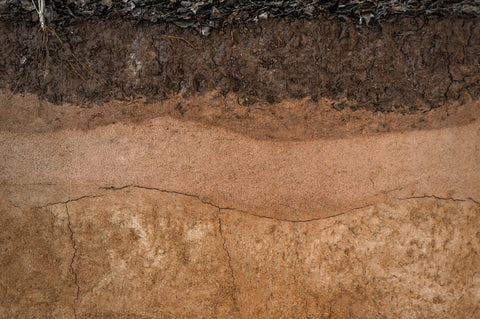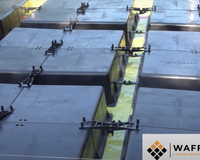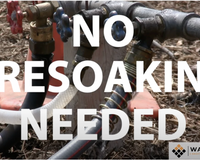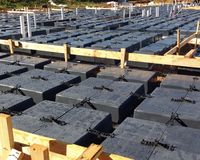Clay is not an ideal soil type for construction. Clay soil types are known for being highly reactive to moisture, and if you don’t know about the clay you’re building on, it can spell bad news for your construction project. Keep reading to learn what clay is and how you can build a foundation on clay soil.

What is clay?
Clay is a type of soil that is soft and sticky when wet and hard when dry. Out of all the soil types, clay has the finest particles, which gives it its physical characteristics. When wet, clay particles are surrounded by a molecular film of water, which causes it to be high in plasticity.
Properties of clay soil:
- High plasticity
- Reactive to water
- Swells and contracts
- Sticky
- Heavy when wet
- Brittle when dry
The characteristics of the clay on your site can vary greatly depending on the composition of your clay and the local climate. This makes getting an up-to-date geotechnical report crucial to the success of your project. Without the proper techniques, you can easily go over budget and time.
What are the different clay types?
Clay soil can be classified by its mineral composition and plasticity. The mineral composition found inside clay soil differs by color and geographic location. For example, Texas clay soil is known for its dark gray to black color, while clay soil in Hawaii is known for its red color.
Here are seven clay types defined by the USDA:
- Silt: 80 percent or more silt and less than 12 percent clay.
- Sandy clay loam: 20 to 35 percent clay, less than 28 percent silt, and 45 percent or more sand.
- Clay loam: 27 to 40 percent clay and 20 to 45 percent sand.
- Silty clay loam: 27 to 40 percent clay and less than 20 percent sand.
- Sandy clay: 35 percent or more clay and 45 percent or more sand.
- Silty clay: 40 percent or more clay and 40 percent or more silt.
- Clay: 40 percent or more clay, less than 45 percent sand, and less than 40 percent silt.
The only way to be sure of your clay soil composition is to have it tested. However, you can also make a good prediction of the clay content in your soil by referencing nearby geotechnical reports.
For a quick informal on-site test, try grabbing a handful of soil and rolling it in your hand. If the soil can be rolled into thin spaghetti-like shapes, it indicates a high clay content. If the soil begins to fall apart as you roll it between your hands, it means there is a lower clay content.

Where are you likely to find clay soil?
Texan soil is notorious for having a high clay content. You can see it evidenced in cracks in walls and foundations of homes that haven’t been adequately protected against differential soil movements. Some foundations even “taco” under immense pressure.
A region known as the Blackland Prairies, known for its high clay content, spans over 15 million acres and covers areas in the hottest housing markets of the state. If you are building in the area between San Antonio and north of Dallas, you will likely encounter rich and dark clay soil. This is why Texas is #1 in foundation problems caused by expansive soil.
How to build a foundation on clay soil
The challenge to building a foundation on clay soil is protecting it from the regular expansion and contraction when exposed to moisture. Over time, an unprotected foundation can sustain significant and costly damages. But this doesn’t mean you can’t build on clay soil or that your project is doomed to suffer irreparable damages.
The best way to build a foundation on clay soil is to use an above-ground foundation to withstand differential pressures, such as the Wafflemat System. This foundation design can stand up to the frequent expansion and contraction caused by clay soils, using empty cavities on their underside to absorb the expansion.
For the best results, always consult a geotechnical engineer for advice on how best to proceed with your soil type and project specifications. Learn more about how to build a foundation on clay soil by reading our articles from engineers in the field. Read from first-hand knowledge and find all the answers to your soil questions.
Or, Contact a Wafflemat Staff Member Today to chat with one of our experts.





